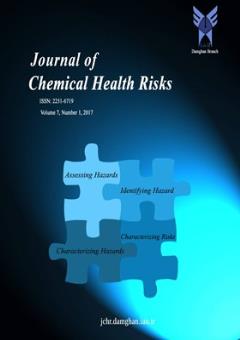Patho-biochemical Markers of Renal Toxicity in Homing Pigeons (Columba Livia f. Urbana) Induced by Nano-ZnO Particles
محورهای موضوعی :Mehran Arabi 1 , Hamid-Reza Naseri 2
1 - Department of Animal Sciences, Faculty of Basic Sciences, Shahrekord University, Shahrekord, Iran
2 - Department of Animal Sciences, Faculty of Basic Sciences, Shahrekord University, Shahrekord, Iran
کلید واژه: Birds, Nanotoxicity, Renal toxicity, Oxidative stress,
چکیده مقاله :
Nanotechnology, the main technology in the twenty-first century, is the perception and control of matter at the dimensions 1-100 nanometers which revolutionized many aspects of modern life. Birds have not been used as commonly animal models in experimental toxicology but have proven useful in monitoring of environmental quality. This study aimed to evaluate zinc oxide nanoparticle (nano-ZnO) toxicity on kidneys in the homing pigeons (Columba livia f. urbana). The experimental groups orally received doses of 0, 30, 50, and 75 mg kg-1 b.w. of nano-ZnO (1 ml per bird, everyday) for time periods of 7 and 14 days. The lipid peroxidation (MDA/LPO) content, catalase (CAT) activity, and carbonyl protein (CP) content were increased and the total antioxidant capacity (TAC) level was lowered in kidney samples. The plasma levels of uric acid, urea, and creatinine were also slightly elevated (p>0.05). Histopathological examinations showed glomerular nanoparticle aggregation and tubular necrosis lines in the kidney parenchyma. In brief, nano-ZnO affected kidney function and structure in homing pigeons through the induction of oxidative stress.
Nanotechnology, the main technology in the twenty-first century, is the perception and control of matter at the dimensions 1-100 nanometers which revolutionized many aspects of modern life. Birds have not been used as commonly animal models in experimental toxicology but have proven useful in monitoring of environmental quality. This study aimed to evaluate zinc oxide nanoparticle (nano-ZnO) toxicity on kidneys in the homing pigeons (Columba livia f. urbana). The experimental groups orally received doses of 0, 30, 50, and 75 mg kg-1 b.w. of nano-ZnO (1 ml per bird, everyday) for time periods of 7 and 14 days. The lipid peroxidation (MDA/LPO) content, catalase (CAT) activity, and carbonyl protein (CP) content were increased and the total antioxidant capacity (TAC) level was lowered in kidney samples. The plasma levels of uric acid, urea, and creatinine were also slightly elevated (p>0.05). Histopathological examinations showed glomerular nanoparticle aggregation and tubular necrosis lines in the kidney parenchyma. In brief, nano-ZnO affected kidney function and structure in homing pigeons through the induction of oxidative stress.


